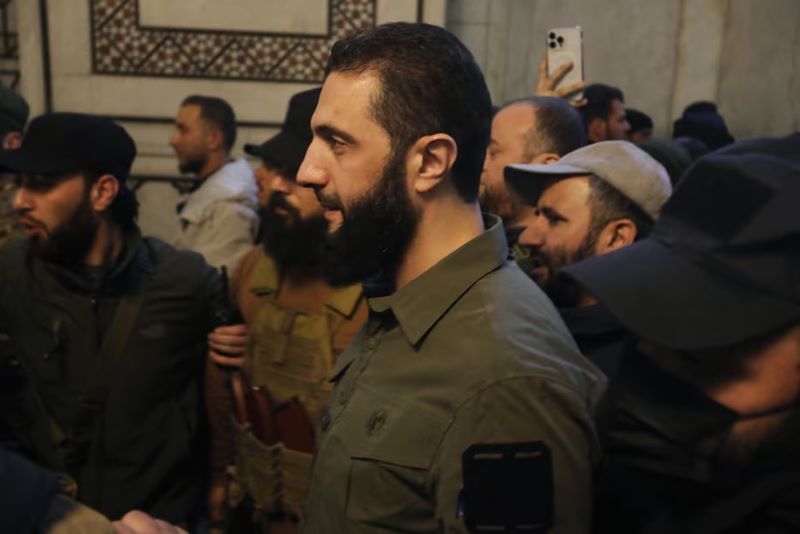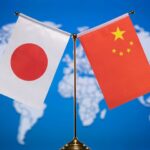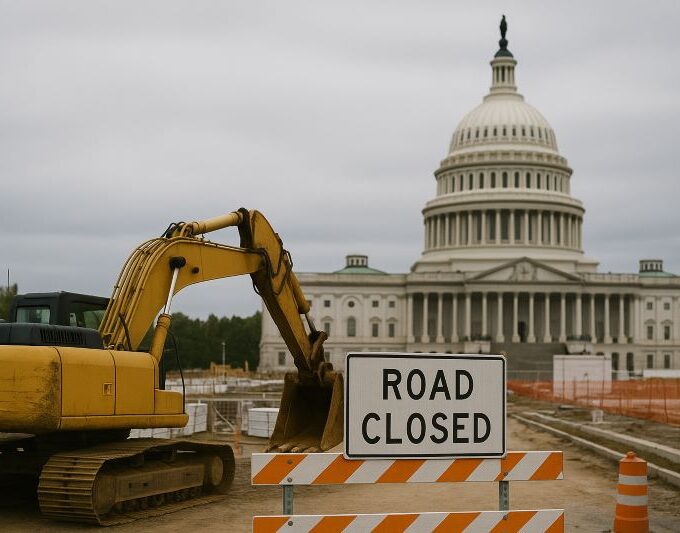The leader of Hay’at Tahrir al-Sham (HTS), the Islamist rebel group that spearheaded the ouster of the Bashar al-Assad regime, said Tuesday that Syria’s rebel factions will be dissolved, with all fighters uniting under the country’s Defense Ministry.
“Syria must remain united, and there must be a social contract between the state and all sects to ensure social justice,” Ahmed al-Sharaa, formerly known by his nom de guerre, Abu Mohammed al-Jolani, said during a meeting with the minority Druze community, according to a statement posted on HTS’s Telegram account. “The factions will be dissolved and the fighters will be prepared to join the Ministry of Defense, and everyone will be subject to the law,” Sharaa added.
The rebel groups that joined HTS in toppling the decades-long Assad regime were a complex patchwork of fighters, backed at times by foreign powers who were focused on battling different enemies — including, sometimes, one another. Sharaa’s ambitious goal of bringing all the factions together under a national army is one of a string of promises he is making to show that his government will be inclusive of all Syrians as it bids for international legitimacy.
Israeli Prime Minister Benjamin Netanyahu visited an Israeli-controlled portion of Syria on a security tour of an area that Israeli officials have described as a buffer zone, which includes the summit of Mount Hermon. Netanyahu said that Israel will remain in Syria “until another arrangement is found that will ensure Israel’s security.”
The visit marked a rare trip to Syrian territory by a sitting Israeli leader and was the first visit of Israeli top officials since the positions were taken by the Israel Defense Forces.
HTS, which remains on the State Department’s list of terrorist organizations and has historical ties to the Islamic State and al-Qaeda, has sought in recent years to rebrand itself as an Islamist movement with a focus on local issues, rather than transnational jihad.
The United States has been pushing for a stable transition in Syria. U.S. officials have made direct contact with HTS, and Secretary of State Antony Blinken said he wants Syria’s government to respect the rights of women and minorities and not tolerate terrorist groups in the country. The United States has signaled it would recognize a future Syrian government under certain conditions.
Here’s what else to know
- The U.S.-backed Syrian Democratic Forces has proposed that Kobane — a city of great emotional significance for Kurdish independence — be offered up as a demilitarized zone, in a major concession to stave off a looming Turkish offensive against the group.
- The U.S. State Department announced on Tuesday a week-long extension of a ceasefire between Turkey and the SDF, which collapsed the night before.
- Amid speculation about a Gaza ceasefire deal, Hamas said in a statement that “serious and positive discussions” took place Tuesday in the Qatari capital, Doha, and that a deal is “possible” if Israel does not impose new conditions.
- Israeli Defense Minister Israel Katz said Tuesday that his country seeks to “maintain full security control over Gaza, with complete freedom of action,” in a social media post laying out his views of a postwar Gaza.
- At least 45,059 people have been killed in Israel’s war in Gaza and 107,041 injured, the enclave’s Health Ministry said Tuesday. The agency does not distinguish between civilians and combatants.
- Israel estimates that about 1,200 people were killed in Hamas’s Oct. 7, 2023, attacks, including more than 300 soldiers. It says 386 soldiers have been killed since the launch of its military operation in Gaza.
3:12 PM: CNN says it was misled by man freed in Syria report with Clarissa Ward
CNN confirmed Monday evening that it was misled by a man who was freed from a Syrian prison last week while the network’s cameras were rolling.
During a package filmed on Wednesday, CNN viewers watched as chief foreign correspondent Clarissa Ward — along with a security guard who is a member of the rebel forces that toppled Bashar al-Assad’s government — discovered a man who had been locked away in a prison cell, seemingly forgotten. The man, hidden under a blanket, was given water, told he was free to go and was walked out of the prison gripping Ward’s arm.
The man identified himself during the segment as “a civilian” named Adel Ghurbal, who was taken by the intelligence service from his home three months ago and interrogated. He seemed to be overwhelmed with emotion when told that Assad’s government had fallen.
But the network reported on Monday evening that the man’s name is actually Salama Mohammad Salama and that he served as a lieutenant in the Assad regime’s Air Force Intelligence Directorate. (The Washington Post has not verified the man’s identity.)
2:07 PM: More Russian equipment being moved at airbase in Syria, satellite imagery shows
Russia appears to have begun a large-scale loading operation at its main air base in Syria over recent days, with forces in the country apparently moving out, according to analysts who have reviewed new satellite imagery.
Imagery captured Sunday by the imaging companies Maxar and BlackSky showed rows of heavy equipment staged on the tarmac at Hmeimim air base, as well as three Antonov An-32 and four Ilyushin Il-76, two different types of Russian military transport aircraft. Those aircraft had joined an Antonov An-124, one of the largest military transport planes in service, which had been seen on satellite imagery taking on cargo at the base two days earlier.
Four mobile launchers for Russia’s S-400 surface-to-air missile system had also been lowered, moved and parked near the Il-76s on Sunday.
A later image, captured by BlackSky on Tuesday and provided to The Post, showed that the heavy equipment had been removed, and three of the four S-400 missile launchers were also absent, having vacated the base, according to a BlackSky analyst who spoke on the condition of anonymity because of company restrictions.
At Russia’s naval base at Tartus, about 35 miles south of Hmeimim, an image captured by Maxar on Tuesday also showed rows of newly-arrived military trucks and armored personnel carriers, though the Russian Mediterranean flotilla typically based there remained off shore, where it had moved around Dec. 3.
Russia’s large military footprint in Syria was significantly expanded after its intervention in the country’s civil war in support of the Kremlin-backed president, Bashar al-Assad. However, after the ouster of Assad and the collapse of his regime Dec. 8, the future of Russia’s military presence in the country is uncertain.
Speaking on Monday, Kremlin spokesperson Dmitry Peskov said that no final decision on the future of the bases had been reached.
1:57 PM: Netanyahu visits Israeli-controlled Syria, says Israel will stay there for the foreseeable future
Israeli Prime Minister Benjamin Netanyahu visited Syria on Tuesday for a security tour of an Israeli-controlled buffer zone, including the summit of Mount Hermon, and said that Israel will remain in Syria “until another arrangement is found that will ensure Israel’s security.”
The visit marked a rare trip for a sitting Israeli leader to enter Syrian territory, and the first visit of Israeli top officials since the positions were taken by the Israel Defense Forces.
“I am here at the summit of Mount Hermon. … Its importance to Israel’s security has only grown stronger in recent years, especially in the last few weeks with the dramatic events unfolding below us in Syria,” Netanyahu said in a latest video statement from the Syrian summit.
At the summit, the prime minister held an assessment and review of IDF deployment in the area, along with Defense Minister Israel Katz, the IDF chief of staff, the head of Northern Command and the director of the Shin Bet security agency, according to an Israeli government release.
Katz said the IDF must quickly solidify its position in the area, including by building fortifications and improving living conditions to “fully prepare for a possible prolonged stay,” according to a Defense Ministry news release.
“We will remain here for as long as necessary. Our presence at the peak of Mount Hermon strengthens security and adds an element of observation and deterrence against Hezbollah strongholds in Lebanon’s Bekaa Valley, as well as against the rebels in Damascus, who pretend to present a moderate face but belong to the most extreme Islamist factions,” Katz said.
He called the summit of Mount Hermon “Israel’s eyes for identifying both near and distant threats.” He said the area was the “most strategically significant location” to defend the Golan Heights community.
Israel began occupying the Golan Heights after the 1967 war.
Between Syria and the Golan Heights is a U.N.-administered buffer zone created as part of a ceasefire between both those countries.
Soon after rebels took control of Syria’s capital, Israel moved to seize military posts in that country’s south. It marked the first time Israel sent its troops across the border since the official end of the Yom Kippur War in 1974.
Israeli officials said it was a limited move aimed at preventing rebels from using abandoned Syrian military equipment to target Israel and the Golan Heights.
On Sunday, the Israeli government approved a plan to expand settlements on the occupied Golan Heights. “Strengthening the Golan is strengthening the State of Israel, and it is especially important at this time,” Netanyahu said.
1:56 PM: Syria’s collapse and Israeli attacks leave Iran exposed
A week of punishing Israeli airstrikes on Syria after the fall of Bashar al-Assad didn’t just set Syria’s own military back years, experts said, but also peeled away another layer of Iranian defenses in the region, leaving Tehran more exposed than it has been in decades.
Iran’s growing vulnerability has generated alarm within the government, stirring fears that its steadily escalating conflict with Israel could soon enter a more dangerous phase. Hard-line supporters of the regime are talking more publicly, and more frequently, about adopting nuclear deterrence to thwart a possible Israeli attack. And among the country’s beleaguered opposition, there is new hope that the crumbling of Iranian power abroad could lead to a loosening of authoritarian rule at home.
“The fingers of the Islamic Republic are being cut off and are getting weaker,” one activist from Iran’s Baluchistan region said by phone, speaking on the condition of anonymity for fear of reprisals.
After Assad’s ouster by Islamist rebels — preceded by the abrupt departure of Iranian advisers and the withdrawal of allied regional forces — Israel took advantage of the power vacuum to destroy vast amounts of Syrian military infrastructure. Hundreds of strikes destroyed warplanes, helicopters, weapons caches and the bulk of the country’s navy.












